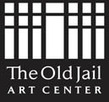Karla Garcia is a Mexican-born, Dallas based artist whose research into her history and place informs her work. Utilizing primarily terra cotta clay in a very direct approach—resisting adornment or decoration and leaving evidence of the artist’s hand—Garcia creates elaborate installations interpreted from desert landscapes. These landscapes evoke far west Texas including the surrounds of El Paso and Juarez as well as the Chihuahuan Desert.
For her Cell Series exhibition titled When the Grass Stands Still, the artist researched the regional environs of the museum’s region of Texas. Coordinating with the OJAC’s Robert E. Nail Jr. archivist, Garcia studied historical images and books relevant to the natural landscape as a resource for a new body of work for her installation. Garcia suggests that the sculptural forms “exist as part of the land, teaching and reminding us of our personal and cultural history and being part of the land.”
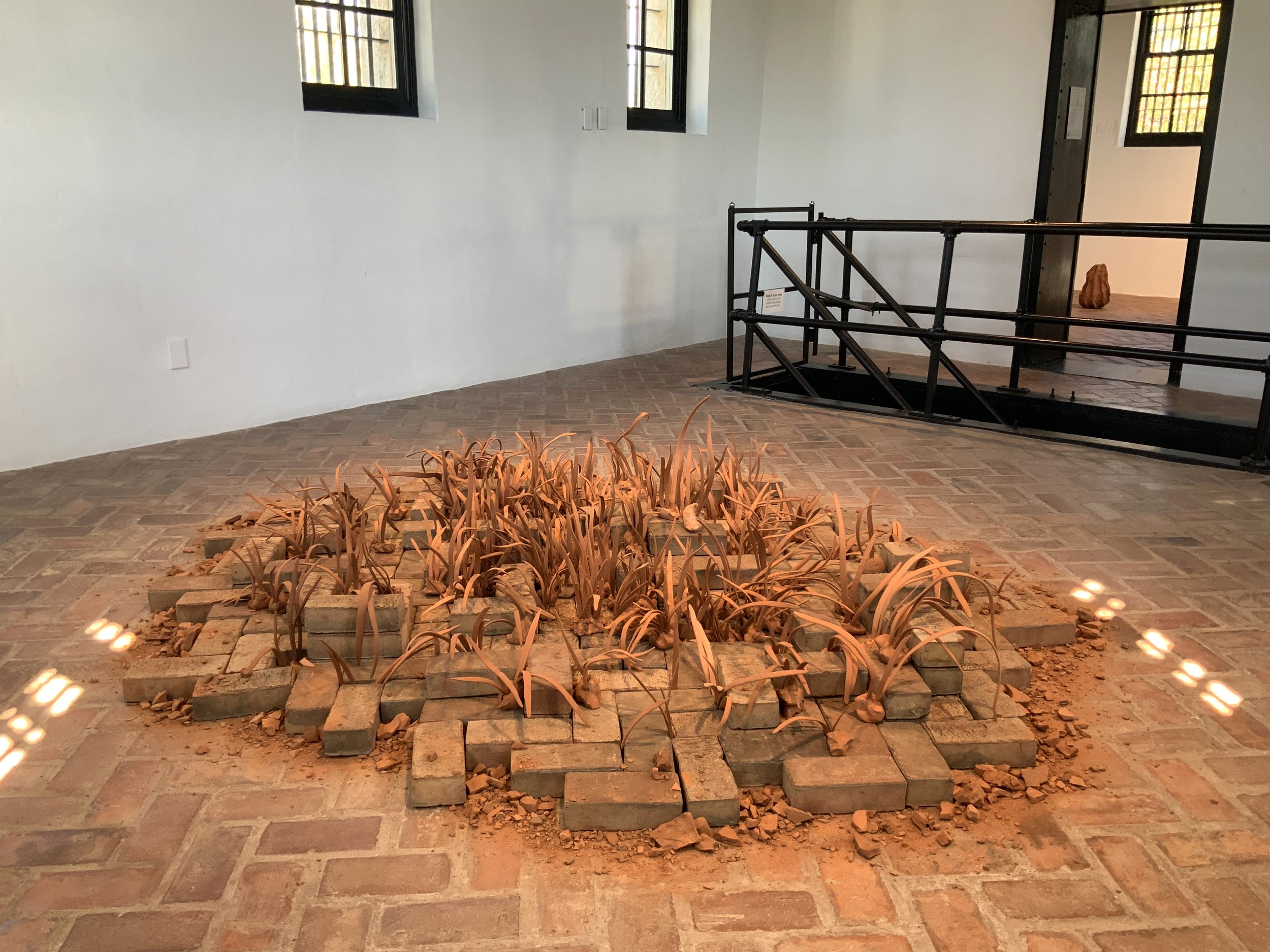
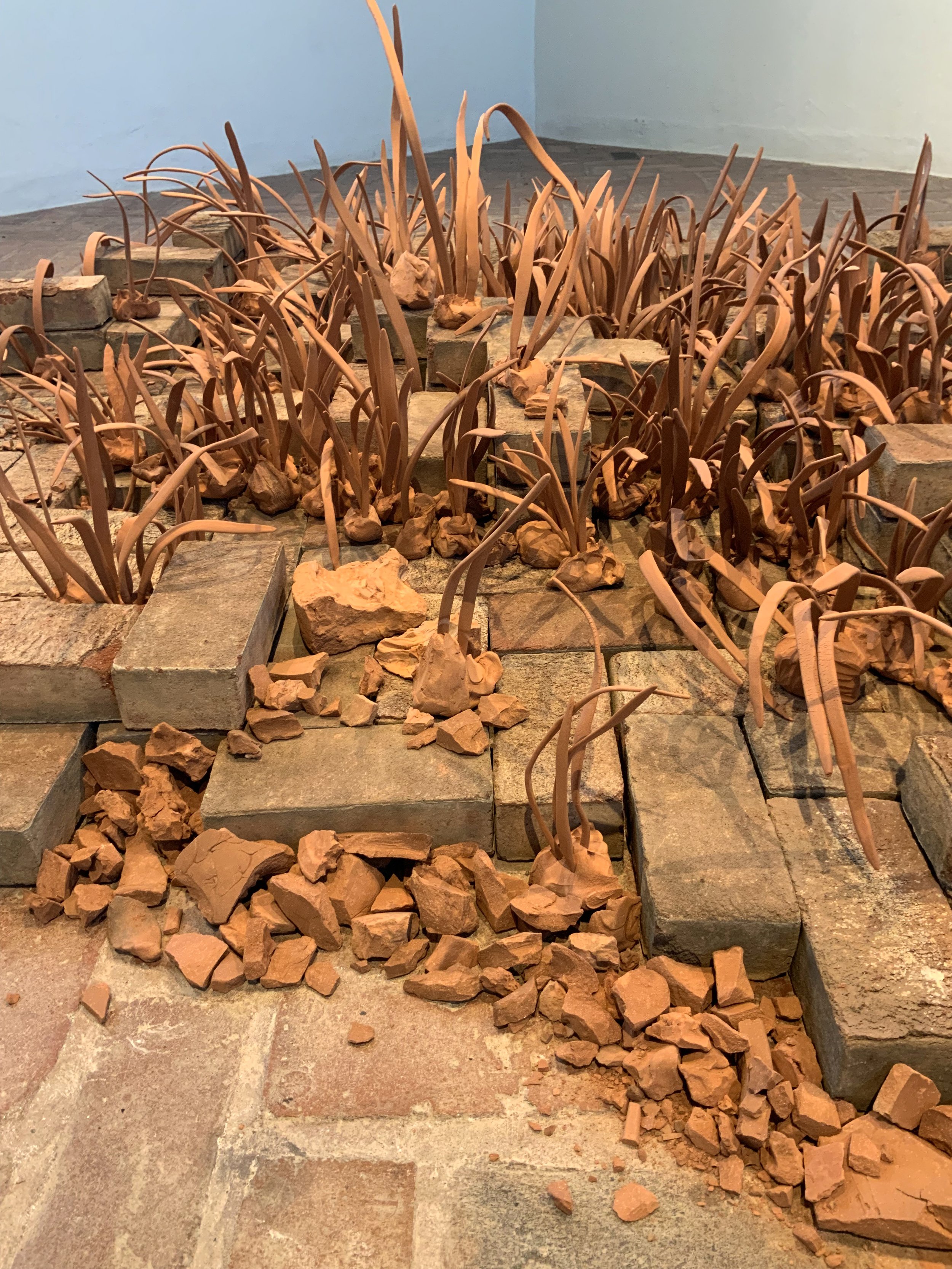
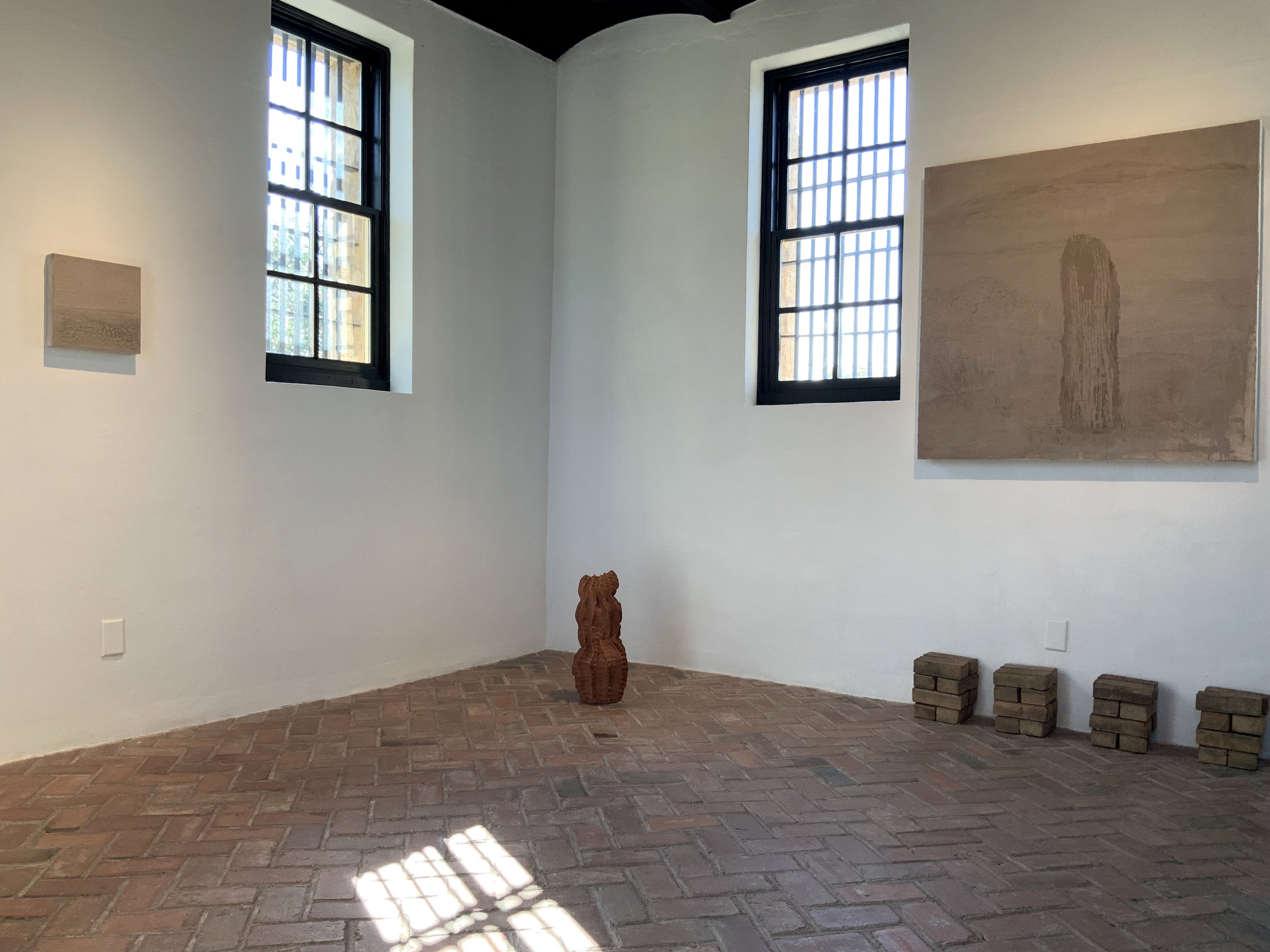
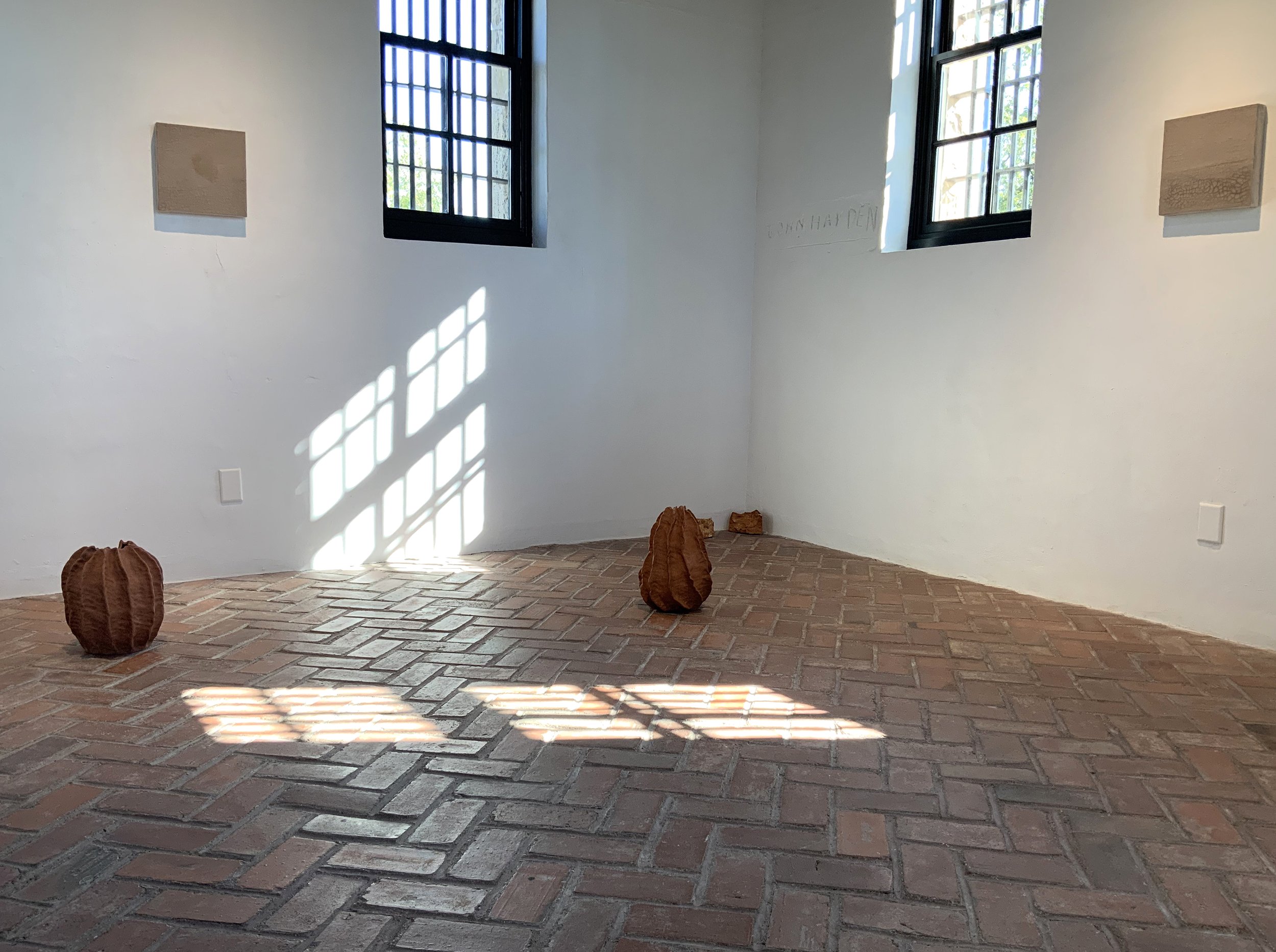
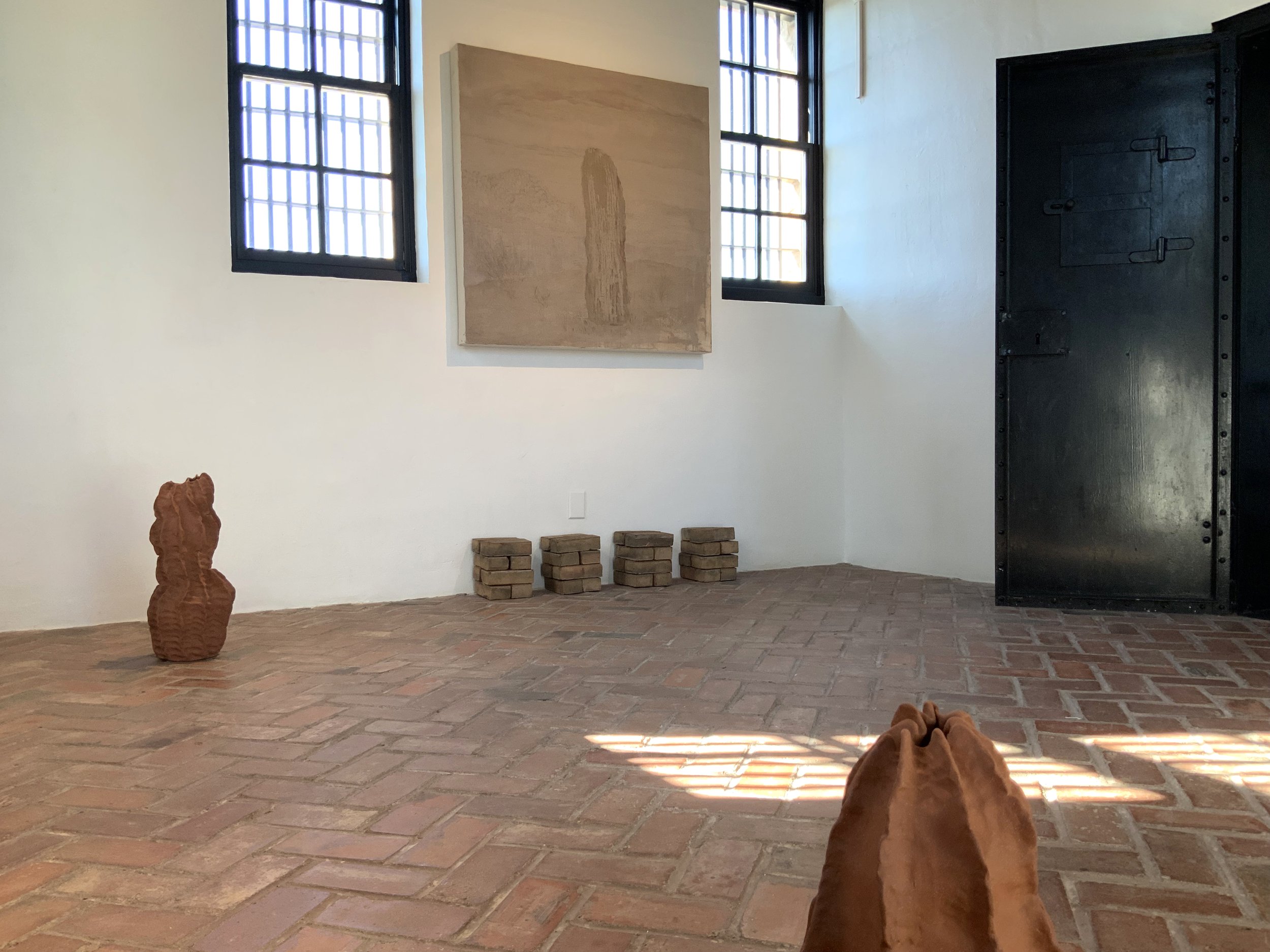
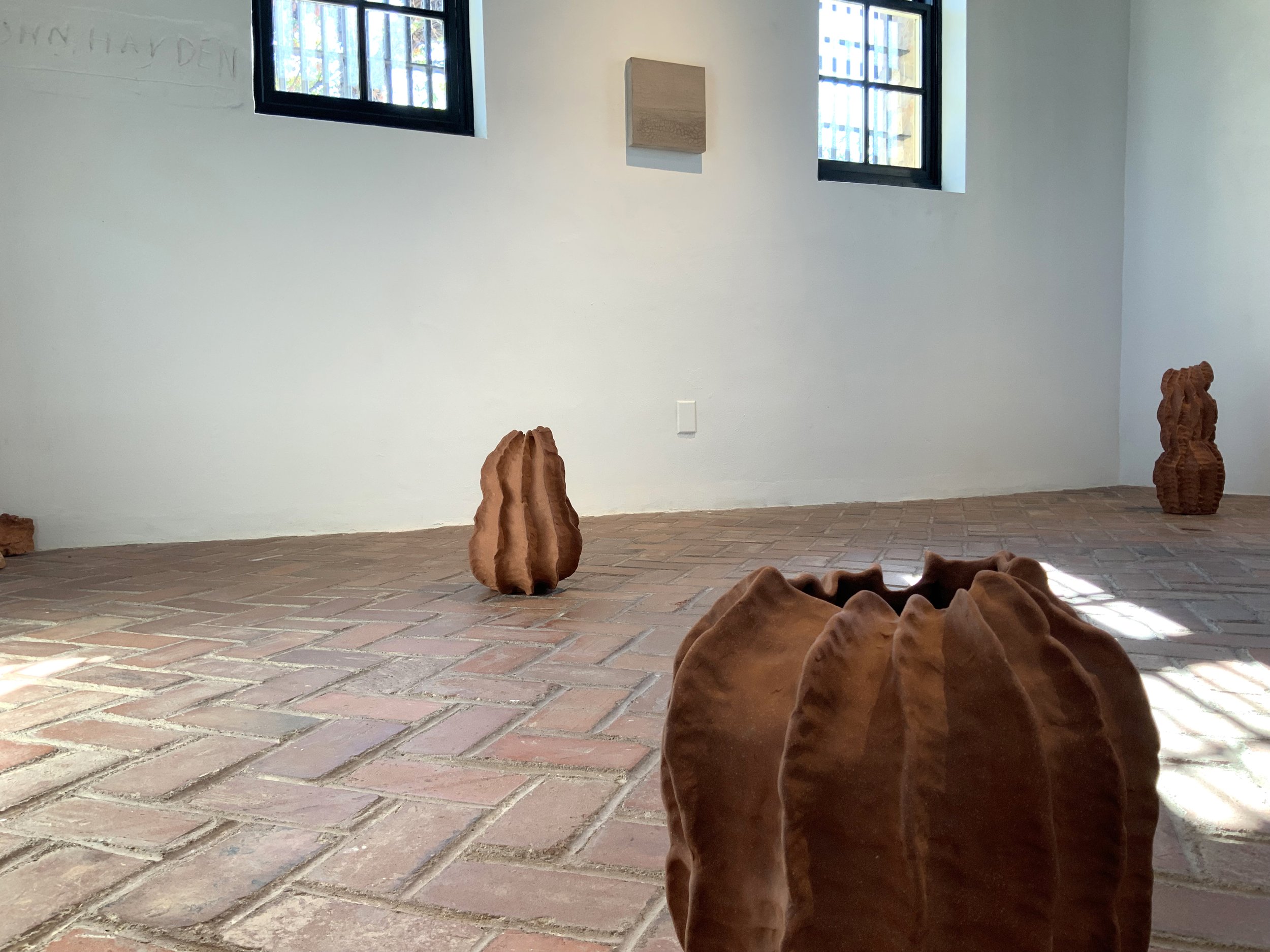
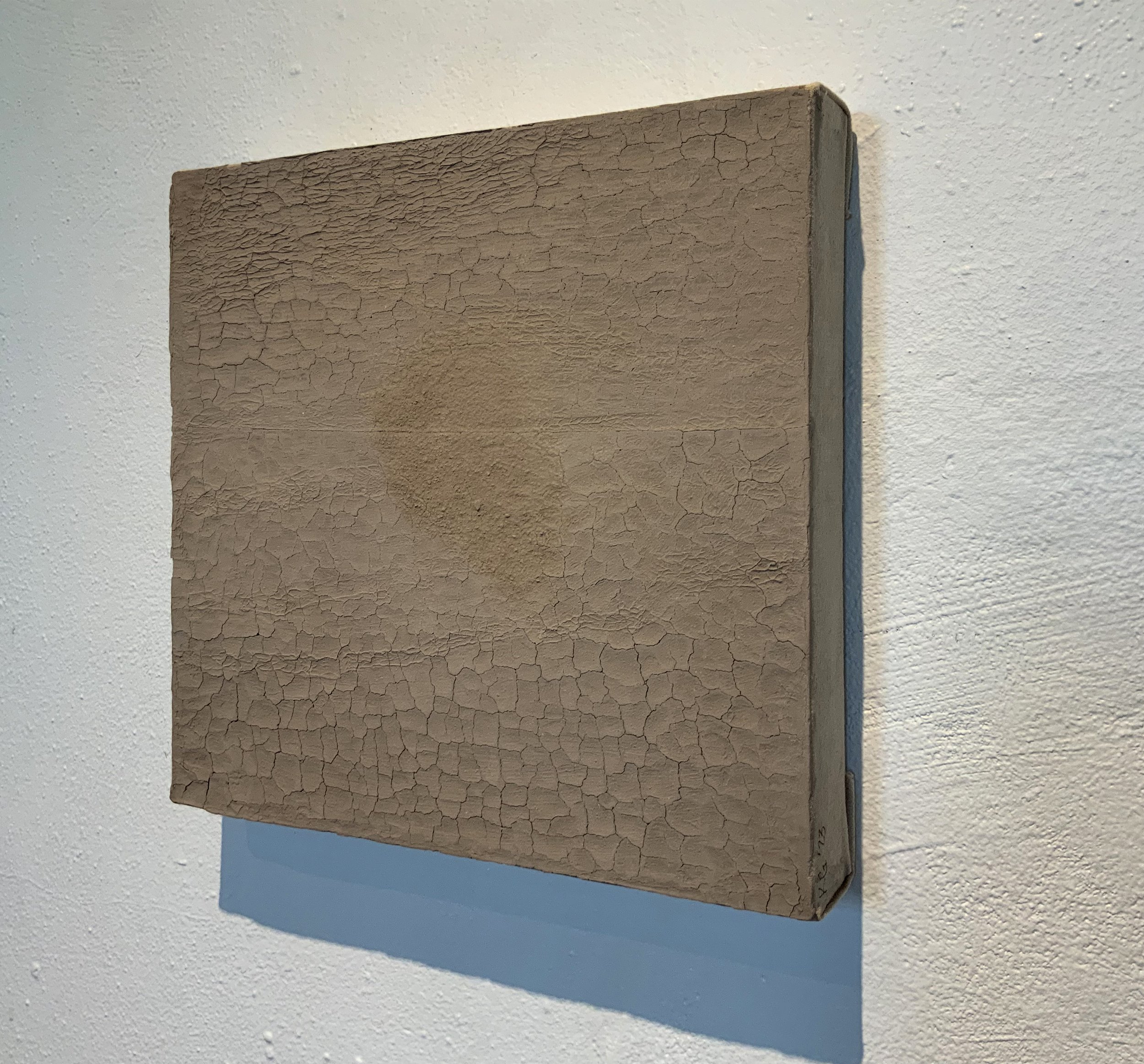
Patrick Kelly, OJAC Director and Curator, interview with Karla Garcia
PK: I often begin by asking artists to talk about their youth (where they were born/raised, family, etc.) because it often informs their work. Do you mind briefly providing some of this information?
KG: I was born and raised in Juárez, Chihuahua, Mexico, just across El Paso, on the Texas / Mexico border. I went to a Catholic school growing up through 7th grade, which is when my mom, brother, and I left Mexico to live in the U.S. My parents had gotten a divorce earlier when I was maybe 10 years old. We lost everything, and my brother and I went to live with my grandmother while my mom left to study nursing. After we moved to El Paso, my mom remarried a wonderful man from Syria. My home became this hub of culture, food, and language, teaching me about the world and how I relate to it. During this time, my brother and I went to high school, and a year later, he tragically passed away. A few years later while I was in college, my stepdad also passed away from cancer while in Syria. And once my mom came back my mom’s sisters, my grandmother, and I helped my mom raise my younger brother and a newborn sister while she worked. These events have always marked my story, and the emotions that come from loss and resilience, but also love and building a life, are marked on my sculptures and how I alter forms and leave the residue of my fingers on my cactus sculptures.
PK: I’m sorry for your losses but happy you had family to get you through those difficult times. While I was reading your reply, I was thinking about cacti that are often your subjects and the harsh environments in which they persevere and often thrive. In addition, I recall your artist statement stating that your cacti are void of spines and appear vulnerable. I see the personal connection even more now.
Can you discuss the color, glazes, and surface of the works? It appears you seem reserved with any glazes—allowing the natural clay color to be evident. Is that accurate?
KG: I appreciate your kind words, Pat. I draw heavily on my personal experience in my work. Glazes are not used in my work, and that is just something I decide for myself. I am inspired by ancient Mesoamerican ceramic vessels and sculptures, which were only painted or left with their natural surface. Materiality, form, textures, and surfaces are all connected to my story, my Mexican heritage, my identity, and, in a way, my personality.
When I fire sculptures, it is another way to see them in a new light as clay becomes rock. In a recent show at 12.26 Gallery, I created sculptures where I combined different surfaces, such as terra sigillata, a Roman term that means sealed earth. This ancient technique allows the surface to be sealed by applying deflocculated clay, which is when the tiniest particles are separated from the heavy ones. Paint can also be added, and if you look at paint closely, you'll find that it contains clay and pigments, similar to ceramic materials like underglazes and engobes. As I paint, I try to capture the colors of the desert in a variety of ways, which are also influenced by the rocks, the river, and the way the light changes the colors of the landscape throughout the day.
In my previous desert landscape installations, I used strictly raw clay because it speaks directly to the land—the desert of the borderlands where I am from. It is underneath and around us; it is visible, present, and tactile. And now, for the Cell Series, I am working on an installation with fired terra cotta that will range from orange to a rich brown color. This is specific to the brick floor in the cells, and I want to reflect that history in my exhibition.
PK: You also utilized the museum’s Archives to research images of regional landscapes. What were you looking for in those old images?
KG: For my new work, the Archives were a great source of inspiration. I focus on finding our connection to the land and our surroundings. I was looking for local landscapes specifically as part of my process to create something related to this part of Texas. Creating this new installation, which contrasts the desert, connected me to where I live now and the region's history. Driving to Albany to visit the museum, I stopped on the side of the road to take photos of the prairie. The pasture that gracefully swayed in the wind and the rustling of plants and trees created such a peaceful atmosphere. My mind went to the landscape I wanted to create for the Cell Series and how it contrasts with the confinement of a jail cell. In my mind, I am thinking about the isolation of a cell and the longing for a moment in nature. We can all relate in a small way to this feeling. We have all collectively experienced isolation from the pandemic or being unable to enjoy the outdoors with this summer’s extreme temperatures, just to name a few. There is a memory or a wish associated with that feeling.
PK: That should serve as an interesting contrast. Given this interview happens prior to installations and often when artists are working on components for their exhibits…how do you anticipate installing works within the two cells? And perhaps share the decision-making involved.
KG: I am making the work in parts so I can create the landscape. I have found old bricks to match the cell’s floor which will be used to elevate the landscape and create a sense that the grass is growing from the interior. Each grass was made individually and fired in clusters that can be moved and arranged specifically for the cells. I also have ceramic cactus sculptures and a large drawing that serves as a story of a journey.
PK: That leads me to ask about your two-dimensional works, including the works you reference as “drawing with clay.” They appear to made with a clay slip poured on stretched canvas and the drying causing fissures. The results are fantastic. Can you talk more about these?
KG: I love the versatility of clay. Yes, I use various mixtures and consistencies of slips that dry differently. I make these drawings because they are another way of symbolically lifting and seeing the ground in front of us. With the clay mixtures, I recreate not just what I see and feel, but what we can't see, but know it exists. The ground varies from dry and cracked to fluid muddy surfaces. With these drawings, I focus on something as simple as a gesture about what land feels like, actual images of the desert, or something more complex like the organic nature of the soil, the root systems underneath, and how we are connected and part of it. I often create multiples to dissect, explore, and find connections. Once the works are out in the world, I hope that they encourage viewers to ask their own questions about the meaning of land, our role in it, and what it means to them.
PK: In conclusion, I know you have installed work in the natural environment as well as indoors, in institutional “art” settings. Which do you prefer?
KG: I love both. I like to approach each place as a unique opportunity to discover something. Since my work is influenced by a connection to land and its history, each installation will always be different whether it's outdoors or indoors. When I installed La Línea Imaginaria for a recent binational exhibition, it was both. I installed work outdoors in the natural landscape along the Texas-Mexico border, initiating a conversation about the wall—a man-made infrastructure—and the land that is connected underneath and around us. This was complemented by an indoor installation of clay drawings, photographs, video, and sculptural cactus forms connecting these ideas. It's about research, and imagining how land and nature speak, and our place in it. I think about these things when creating an installation that makes us take in a moment in time.
The 2023 Cell Series of Exhibitions is generously supported by McGinnis Family Fund of Communities Foundation of Texas and Kathy Webster in memory of Charles H. Webster, with additional funding from Lucy & Fowler Carter, Margaret & Jim Dudley, Jenny & Rob Dupree, and Dr. Larry Wolz.
